Design and development of laser writer system for lithography structures
The laser writer system is based on UV laser (405 nm) for fabrication of lithographic structures (~100µm) by writing desired pattern on photoresist coated wafers. The wafer is mounted on three axes motion table. The motion of the wafer is controlled using the developed user friendly software as per the desired pattern to be marked on it. This software communicates with a single board controller Arduino-Uno equipped with GRBL library. The GRBL library is a low-cost alternative for motion control of CNC milling. The software running on this controller is responsible for translation of G-code and M-Code to coordinated motion of stepper motors (up 18 axes). The developed software allows user to generate G-Code for some commonly used shapes like square, line, rectangle and circle with required parameters. The G-code is communicated to the pre-configured Arduino-Uno card which interprets the code and drives the corresponding driver of the related stepper motor. The software facilitates and is capable of managing the GRBL setting, identifying the home location, limit positioning, motion in X, Y and Z axis and executing the G-code file. The laser writer system along with the developed software has been installed in user laboratory of the Indus.
Automation of e-beam evaporation system for different metal coatings
RRCAT requires a large number of different X-ray optics for its accelerator program. To fabricate thin film multi-layer structure required for different types of high quality X-ray optics, an Ion-Assisted Electron Beam Vapor Deposition System was designed and got fabricated by Indus Synchrotron Utilization Division. The complete system comprises of a vacuum chamber, two electron beam guns, their power supplies, XY Sweep control, an ion gun, a thickness monitor, three vacuum gauges, Turbo molecular pump (TMP), Residual gas analyzer (RGA), heater control and associated subsystems. Automated degaussing was implemented for unattended operation and saving the time and effort. Design and implementation of PLC based automation and control system in terms of specification required, design, development, integration with the whole system and commissioning is done.
Development of Kasauti for ultrasound testing (UT) based flaw detection system
A Software is developed for PHWR fuel-rod end-plug weld inspection system using ultrasound testing for Nuclear Fuel Complex (NFC), Hyderabad under a joint collaborative development work. This software is developed for proof of concept system to capture, visualize and store the UT echo waveform. These can be played back at later stage with or without persistence, with lower and upper threshold to highlight probable defects based only on received signal amplitude alone. The system development was carried out based on the study of different data sets and waveforms captured practically from real weld joints at shop floor, NFC. The study has helped in developing understanding of inspection procedure, quantifying the criteria for the defects. The acceptance/rejection criterion for front-wall, defect-region and back-wall was established in consultation with experienced operators from NFC. A suitable algorithm to classify the flaw based on detection of the location and height of multiple peaks was incorporated. Further trials are being carried out by NFC on different fuel element lots with or without defects to make the system finally usable on the shop floor.
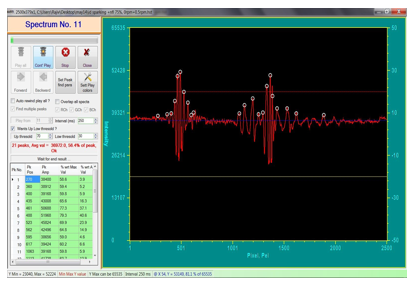
EPICS Development for Indus beam-lines
Beamline experiments are carried out in radiation environment in a Synchrotron Radiation Source. This demands remote control of conducted experiments with precise positioning of samples and detectors along with control of a number of instruments and data acquisition. A large number of stepper motors are engaged for achieving the required precision positioning. Experimental Physics and Industrial Control System (EPICS) based control system has been developed in the beamline of Indus-2. An in-house developed multi-axis stepper motor controller was made EPICS compatible using low-cost single board computer operating under Linux and graphical user interface was also provided.
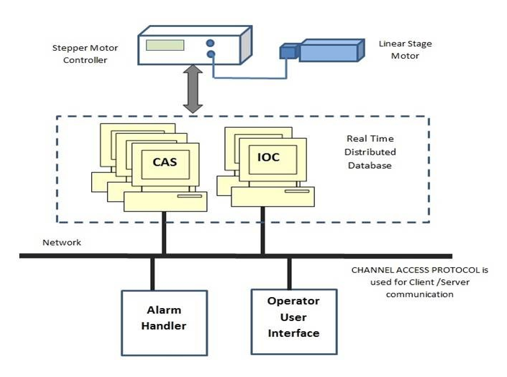
Integrated Energy Scan and Data Acquisition System for Micro-Probe Experiments at Indus
Remote controlled energy scan facility was required for the double crystal monochromator (DCM) installed in the X-ray fluorescence (XRF) beamline of Indus-2. To enhance the utilization of this beamline, incorporation of energy scan along with online data acquisition was essential. An application named X-vistar was developed using mixed and diverse software environments. It operates as a master control and records data for ongoing experiments. The modified DCM control software is configured as a slave and scanning energy scan span as well as step size can be set locally or remotely. To correlate recorded data with Indus-2 parameters, instantaneous values of beam parameter are also gathered. The remote control of DCM energy was tested and verified using standard samples from NIST (USA). The incorporation of the facilities for the developed application increased throughput of the DCM and improved its performance to make it at par with all costly and modern DCMs presently available.
Development for angle dispersive X-ray diffraction (ADXRD) beamline of Indus-2
To enhance the utilization of ADXRD beamline of Indus-2, a high dynamic range, short read-out time and high frame rate detector of 1280 channels was incorporated with the diffractometer. Being a 1-D detector, a suitable sample alignment process was evolved with respect to the direct beam by using half-cut and rocking scan. This is integrated with SPEC software under Linux environment and various macros were written for each and every step of sample alignment. Data is recorded at various step sizes and is stitched together to yield full diffraction pattern. Point detector was used earlier to collect diffraction pattern, which made the process slow and was consuming costly beam time. With this development, the experimentation time could be reduced from 4 hours to 20 minutes for the same scanning range and resolution.
Online web-based JEST examination management with e-Payment
RRCAT was host institute for organizing Joint Entrance Screening Test (JEST) held in year 2014, JEST is the examination for admission to Ph.D. and integrated Ph. D. programme for 27 leading national institutes. Earlier users were supposed to take printout of the application and send the signed form along with Demand Draft through post. A fully online process for this system was developed which resulted in reduction of errors, losses in post, also the time involved in application process and also the expenditure of the process. The e-payment method was first time introduced for JEST. This implementation involving application money was a challenging task and time constraints were very tight. This involved software development for integration of application server with highly secured money transfer method through bank payment gateway. This has enabled the students, a user friendly, quick and convenient procedure to apply using the web-portal. Beside students, the organizers were also benefited with the administrative frontends for easy accounting & reconciliation of the web portal. More than 21,000 students used the system in 2013-14. Various features including support ticketing were also incorporated in the web portal for ease of the applicant. Short Message Service (SMS) technology was also used for communicating the application status, payment status and results to applicant on their mobile numbers. JEST web portal was successfully implemented meeting the time-bound activities with no error and without any complaint.
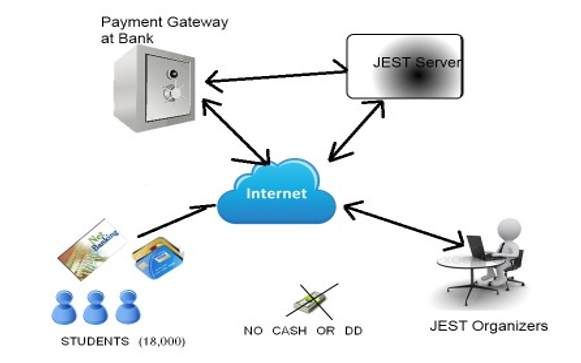
Akruti - Wrapper for Poisson Superfish
To perform two-dimensional (2-D) electromagnetic design studies for elliptic superconducting radio frequency (SCRF) cavity, electromagnetic field solver code SUPERFISH is being used extensively all over the world. This electromagnetic field solver requires input parameters file for its operation, which has to be generated and optimized interactively. Generation of the input file and fine tuning of interdependent parameters, consumes lot of time and efforts. A large number of datasets need to be collected from multiple output files generated by the solver which is a tedious task. In this paper, wrapper software was developed in Vb.Net, which calculates the geometrical parameters, generates SUPERFISH input file, executes it and gathers the results from multiple files in single interface. This eliminates time consuming process and automates computational system. The wrapper also re-initiates the computation process, after examining the output parameter values and continues till the desired result is achieved. For better user interaction it also displays online intermediate process parameters with deviation in tabular formats as well as graphical representation. Optimized design parameters for single / multiple cell cavity computed using developed wrapper are in accordance with the accuracy of manual computation. This technique segregates results exceedingly fast and without errors. This developed wrapper software has an increased throughput of the electromagnetic field solver for tuning of parameters for designing the accelerator cavity.
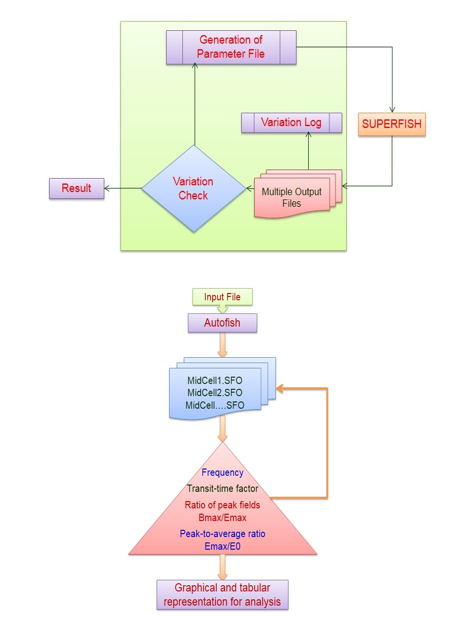
X-ray florescence (XRF) spectrum analysis application
An application named Deepti was developed to analyze X-ray florescence (XRF) spectrum along with a user friendly graphical user interface (GUI). A special feature of non-linear background subtraction was introduced. While applying non-linear subtraction, polynomial of order 3 to 11 can be fitted. It provides gross and net area of region of interest of the spectrum. In a special analysis mode, it can also provide measurements of FWHM, rise or fall of any peak in terms of channel or energy. To improve measurement accuracy, various techniques to improve signal to noise ratio are developed and incorporated along with multiple averaging options.
Control and data acquisition system for Copper Vapor Laser (CVL) master oscillator power amplifier (MOPA) chain
Control and data acquisition system software has been developed for CVL MOPA Chains at RRCAT as well as at BARC with a special feature of remote health monitoring using Anunet. The system is designed and implemented with proper access mechanism, reliability features and database integration. The system at RRCAT is developed to control 145 processors simultaneously, operating to control the operation of large number of CVL lasers and associated sub-systems through single software. A similar system installed at BARC controls eighteen CVL lasers and is utilized in AVLIS program
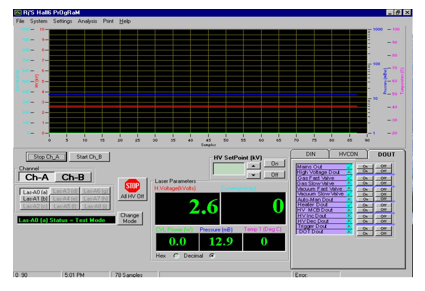
An Automation Software for ECR Experiment at Cryogenics Temperatures
Low temperature offers an exciting opportunity to understand physical properties of various material and process. Electrical contact resistance which is fairly understood at room temperature behaves in entirely difference way at temperatures below the room temperature. Estimation of contact resistance and its behavior at low temperatures is not only necessary for its application areas but for understanding the contact mechanism and controlling the contact resistance. Low temperature experiments are highly time-consuming, due to the inherent thermal design of these systems, which takes a lot of time to stabilize. Automation of these experiments not only eases the experimentation but also improve the result accuracy.
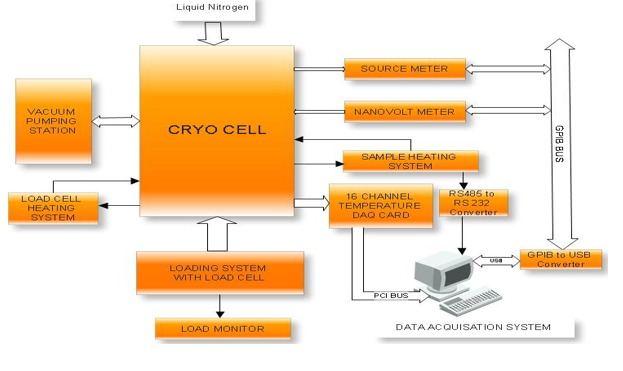
Up-gradation of the Angle Dispersive X-ray diffraction beamline
X-ray scintillation detectors were imported from Radicon, Russia for their use in Indus-2 beamlines. The device driver for these detectors was neither available nor it could be developed because of absence of details from the manufacture. This made these detectors non-compatible with most of the software. The challenge was to thoroughly analyze its communication protocol and to decode it. Shri Jain took initiative and developed the algorithm through which communication with the detector could be successfully achieved and this was later incorporated in the SPEC software. This development reduced sizably the costing of detectors for Indus-2 beamline. This technology can be deployed at other beamlines of Synchrotron radiation source Indus-2 also. The integration of the detector with beamline software has resulted in improved quality of data acquisition and thus much better and efficient utilization of these systems by several beamline users. This has helped in meeting the important mandate of enhanced satisfaction of beamline users.
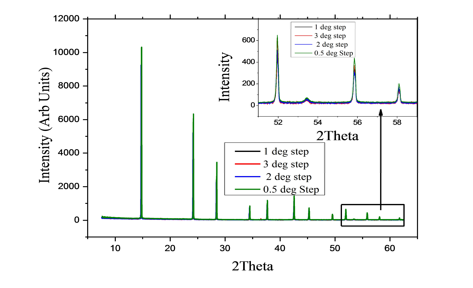
Development of Time of Flight Mass spectrometer
Time of flight mass has been developed to measure the relative abundances of elements with lighter nuclei. Both the conventional linear type and reflectron type time of flight mass spectrometer have been developed. It consists of a compact atomic vapour source (Temperature upto ~1000°C), ion optics (i.e. ion beam accelerating optics, ion beam steering, Einzel Lens and ion mirror) and detection instrumentation. The abundance of Lithium isotopes recorded with the developed TOFMS is in close agreement with the standards.
Development of web portal for National Laser Symposium
National Laser Symposium (NLS) is a very important annual event of laser science and technology community in India. For ease in organizing this symposium, A web portal is designed and developed for management of the symposium. The registered participant uploads their contributed paper on the portal. At each transaction point the participant is communicated through a safe SMS service. For reliable delivery of transactional emails, Cloud based email server was incorporated. Multi-fold growth to this on-line system of laser professionals takes place during portal life of more than 4 years. Currently more than 1500 professionals from the field of lasers are registered on this portal. During NLS – 25 held in December, 2016 this on-line system handled 400 research papers from various research organizations and educational institutes. The in-house design and development of the portal make it more flexible, portable and reusable.
Development of web portals for other applications
Various scientific and technical schools are organized every year in the Department. Open source technologies with existing hardware infrastructure are utilized for the design and development of web interfaces towards the management of such schools. This leads to sizable reduction in organizing expenses. These portals provide full work flow, from registration to final selection of the participants, with online interaction and communication between the participants and organizers. Important web based event management portals developed by him are: SERC School on laser Plasmas, SERC school on x-ray micro-fabrication and Portal for Indian Laser Association.
DAQ for Cryomodule Component Test Rig
Cryomodule Component Test Rig (CCTR) has been designed and developed at RRCAT to test cryomodule sub-systems at cryogenic conditions. This work is being carried out as a part of R&D activities for High Intensity Superconducting Proton Accelerator program. The test rig also provides an experimental facility for evaluating certain value engineering concepts. A data acquisition system is developed to record, visualize and analyze temperature at different locations of the sub-system being experimented with in the CCTR setup. Hioki Data logger is used to interface the sensors with the computer. A master slave topology based application has been developed to acquire and monitor temperature variation at 14 defined locations on 80K thermal shield inside the CCTR. Temperature sensors (PT-100) were installed at defined locations on thermal shield. The real-time temperature data is being acquired at user set interval, and superimposed on the simulated data from Finite Element Analysis (FEA) at the same location on the screen for online comparison. This gives a feedback whether the system is performing as predicted by in the finite element analysis. Experimental trials related to cool down performance of thermal shield have been performed. The system provides facility to graphically visualize the data of selected and all locations in offline mode. Any temperature variation gives us useful feedback for modifying experimental setup or making corrections in the assumptions made for the FEA.
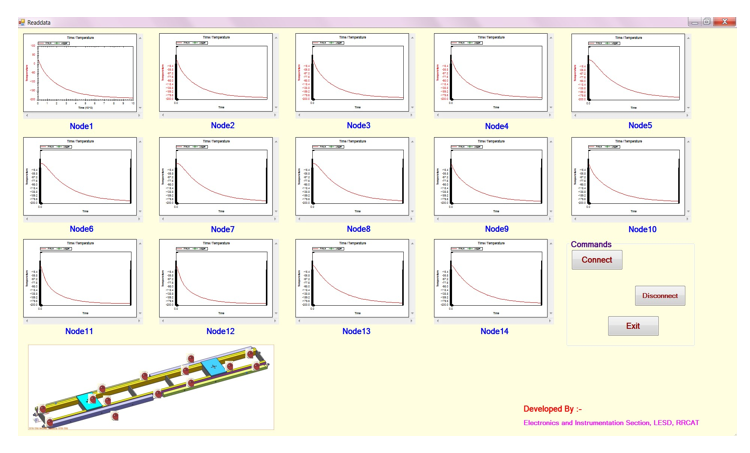
National Science Day Volunteers Nomination Portal
National Science Day is celebrated on last Saturday of February every year. Large number of Volunteers and Exhibitors are required from every Division / Section of RRCAT for organising this event. Write-ups containing the information about the exhibition were also required from all the exhibiting Lab's of RRCAT for the visiting students. A web portal is developed for management of the National Science Day in HTML, php and javascript as frontend and mysql as backend. All the information regarding the event is available on the portal. Every Division / Section Head is able to login, view and nominate the employees from their Division / Section for participation in National Science Day. Nominated names of volunteers and exhibitors were compiled from the inputs provided by various Divisions / Sections. Documents and write-ups were also uploaded on the portal by the concern exhibiting Division / Section Head. Administrator is able to view the profile of all the volunteers and exhibitors and compile the final lists with assignment of the task to individual. Session handling, authenticated utilization, regular backups, portal safety were the few salient features of this web portal. This web portal is successfully utilized during last few years National Science Day.
SCADA for evaluating material property at cryogenic temperature
A software framework was developed for interfacing various homegrown experimental probes to be used at RRCAT
- Low temperature (2K to 400K) and high magnetic field (0 to 9T) environment provided by for Physical Properties Measurement System (PPMS) platform,
- Superconducting magnet cryostat system (5K to 350K, 5T)
- In-house developed closed cycle refrigerators (30K to 350K)
These cryogenic setups are used for measurement of various physical properties such as electrical resistivity (AC and DC), AC susceptibility, thermal expansion, RF impedance and surface conductivity for multiple sample simultaneously. The software automates monitoring and control of temperature, magnetic field and gas flow valve sequences for achieving the desired experimental conditions. A high-level sequencing language has been designed, which provides complete flexibility to the user for programming their experiments. A multi-threaded interpreter has been implemented to understand and execute sequencing programs created by user. Multiple instruments connected over GPIB, and RS232 bus. The program communicate with these instruments and facilities for extensive data logging of environmental parameters such as temperature, magnetic field, cryogen level etc. is provided. Moreover, visualization of experimental and logged environmental data and subsystems for failure handling during critical events such as magnet quench is also taken care by the program. Object oriented methodologies have been applied during the development of framework for future upgradability in terms of adding different types of measurements while keeping the overall structure and user interface unaffected. The software framework has been tested on Windows/x64, Linux/x64 and Linux/arm platforms.
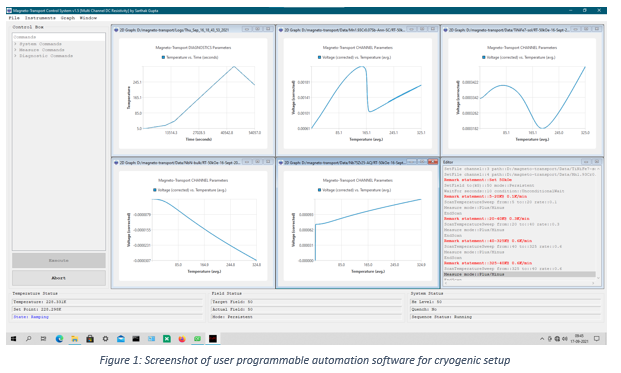
Design and development of Inventory Management Software
A software is designed and developed for Inventory Management. It is the process to track goods from one end to the other along the supply chain. The Inventory Management Software is required because it helps organization/businesses to ensure accurate record keeping of inventory, prevent stock outs, and thus facilitate in managing multiple locations.
The developed software is web based and follow client server architecture. This software provides role-based access to its users. It authenticates users with username and password. The database schemas are designed in MySQL working as backend. The database part of software has 11 database tables, which are normalized up to third normal form. This software takes periodic backup of Database on daily basis. The frontend is developed in PHP. This software provides options for user and item wise search. This Software has four types of users with different level of permissions. First type of user is administrator with permission to create login-id for other users (which may be Building Manager or General User) and can view and generate report for the in-stock items, and their quantities etc. Second type of users are Building Managers(BM) with permission to perform inward entry, outward entry and view the status of in-stock items along with report generation (item wise and user wise etc). To perform inward and outward entry, BM has to select Building, Room, Almiraha and Item Name. The change password option is given to all the users except Data Entry Operator. This software alerts to Building Manager when stock reaches below the buffer stock value for any item.
The Forgot Password option is provided to all its users except Data Entry Operator. The software provides feature to generate report in PDF format by the administrator. Third type of user is General User. General user can make a search item wise across all buildings, for any particular building, makes outward entry, and view in-stock status of any item (inventory) etc. Four type of user is Data Entry Operator with permission to insert the item's data in the item table in database. In this data entry form, Item ID is generated automatically. Data Entry Operator makes data entry i.e. Item name, Item category, Item type, Number qualify for indent (Buffer Stock) and remark. This software has been customized as per user requirements and deployed successfully using WAMP server. This software can be accessed using any web browser like Firefox and Google Chrome. The in-house design and development of this software make it flexible, portable and reusable.
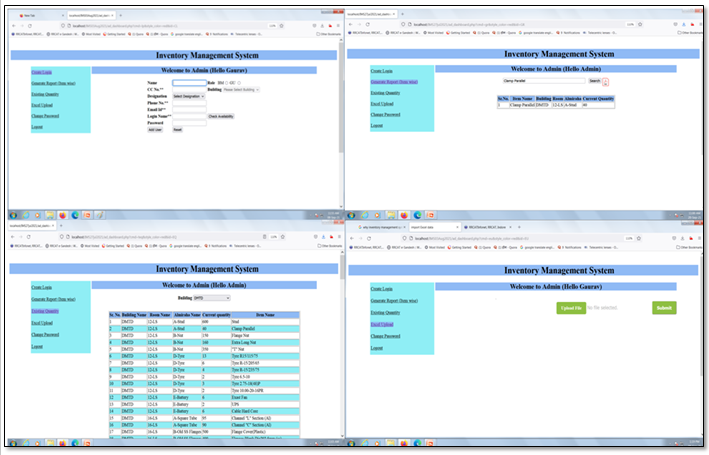
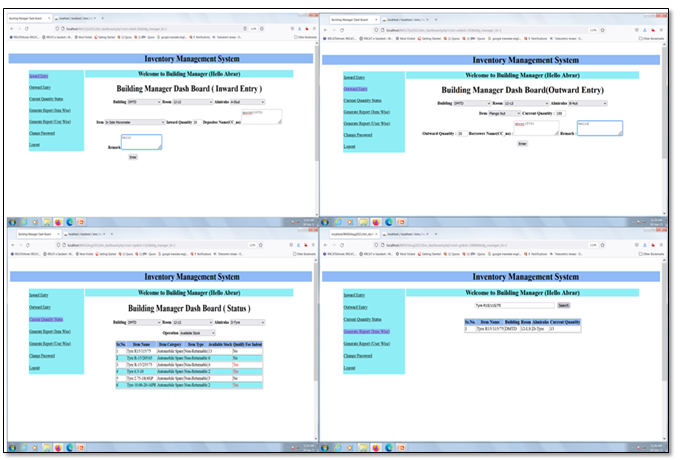
Control Software for Data Acquisition and Wavefront Analysis of Fizeau interferograms
Software is developed for control, data acquisition and computation of surface aberrations and 3D surface profiling instrument, for quality inspection of optical components fabricated at ODDL, RRCAT. The software drives a motorized polarizer, which generates 5 phase-shifted interferograms from a Fizeau interferometer setup which is acquired with a USB camera. The phase information is computed by solving the simultaneous equations represented by these five interferograms, resulting in a wrapped phase map. This wrapped phase map is then unwrapped to generate 3D profile of the surface.
The unwrapped phase map is analyzed using Zernike polynomials defined over a unit circle to compute wave-front aberrations viz. piston, tilt, coma, de-focus, spherical and astigmatism in Seidel terms. To ascertain computational correctness, software reconstructs original interferogram from the analyzed data. The Mean value of 0.1152 and standard deviation of 0.0047 were obtained in repeatability tests for a sample with known PV of 0.1 [wavelength=632nm]. Beside 3D profile, the software also generates surface's X/Y 2D line profiles for further computations. To carry out alignment of test optics with the instrument, a live view with an overlay displaying the ROI along with linear stage controls for component alignment are provided. Software can test flats surfaces and surfaces with large RoCs.
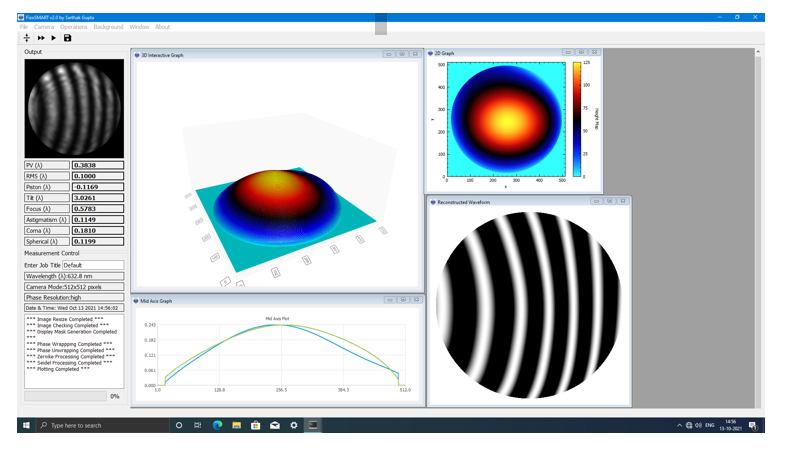







 Home Laser Controls & Instrumentation Division
Home Laser Controls & Instrumentation Division





